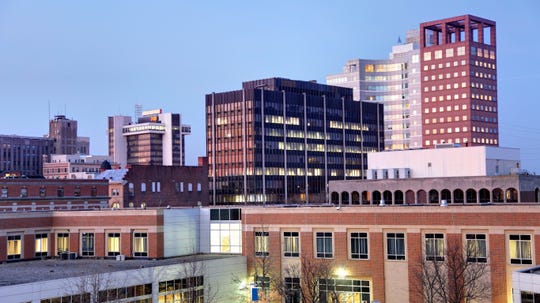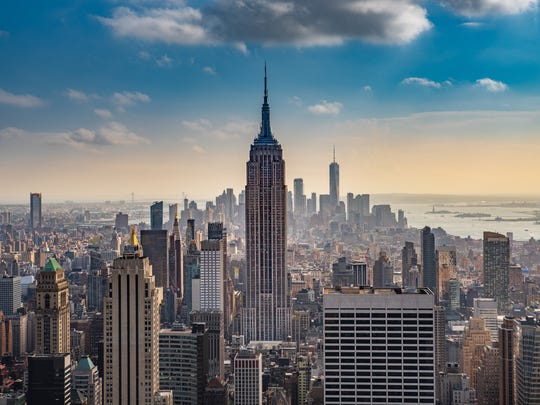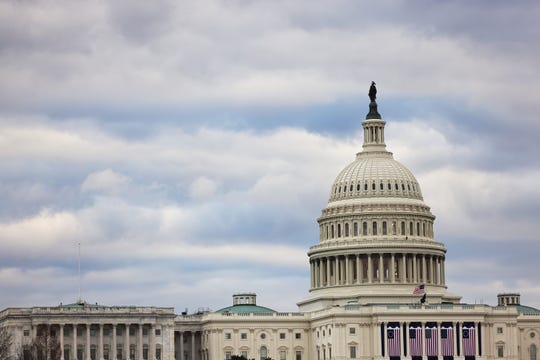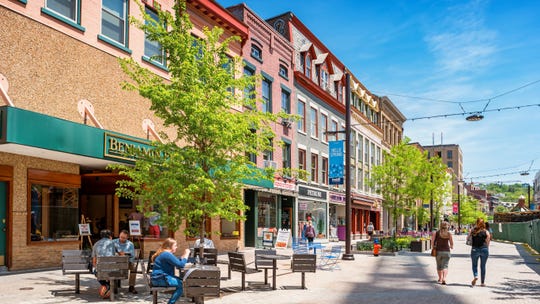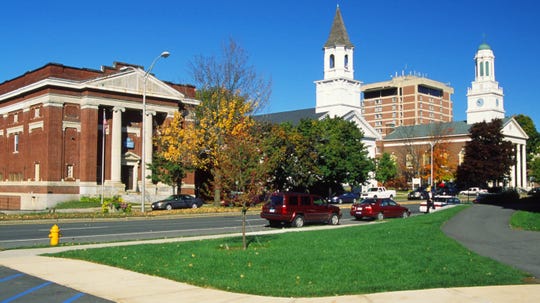These cities could become the biggest winners and losers as more Americans shift to remote work
The end — or at least a substantial easing — of the COVID-19 pandemic is in sight, but the titanic shift toward remote work that it fostered is expected to endure, at least to some extent.
And a trend that allows many Americans to work anywhere is likely to cause a reshuffling of the nation’s 403 metro areas, with some losing residents no longer tethered to local offices and others gaining citizens who can work from home and enjoy a better lifestyle.
Moody’s Analytics has identified metro areas most likely to emerge winners and losers from potentially millions of people movements across the country. It found that Northeast cities are most vulnerable to an exodus of residents while the South and West are most likely to gain, accelerating trends that have been decades in the making.
“People are now free to choose where they live detached from where they work,” says Moody’s economist Dante DeAntonio.
Well, at least some people.
Last year, about 32% of the workforce, largely white-collar employees, was remote, DeAntonio says. A Gartner survey of HR leaders at 130 companies in December found that 90% plan to let employees work remotely at least some of the time even after much of the population is vaccinated.
Some cities will benefit from the shift to remote work. (Photo: Solovyova, Getty Images/iStockphoto)
Offices closing, workers leaving
Many workers, of course, won’t be able to pick up stakes unless they can work remotely all the time. Thirteen percent of executives say they’ll close their offices for good, according to a PricewaterhouseCoopers survey conducted November 24-December 5.
Both surveys, however, tend to poll larger firms. Smaller businesses may be even more willing to let employees telecommute.
To highlight the most vulnerable cities, DeAntonio zeroed in on those with a large share of jobs in industries that allowed many employees to telework during the pandemic, based on monthly surveys conducted by the Census Bureau and Labor Department.
Employees in information, finance and professional and business services were most likely to be working from home. Then he determined which of those metro areas are beset by a relatively high cost of living and low quality of life, according to Moody’s indexes of characteristics such as green space, recreational facilities and “walkability/bikeability.”
To identify cities that stand to gain from the remote work shift, Moody’s simply homed in on those with a relatively low cost of living and high quality of life. Keep in mind there’s no exact science to the rankings. Many people end up moving within regions or to be closer to family, DeAntonio says.
Taking it to the curb: Costco curbside pickup pilot ‘going well.’ Could the service with Instacart soon come to a club near you?
With those caveats in mind, here’s a look at the five most vulnerable metro areas, in no particular order:
Downtown Bridgeport (Photo: DenisTangneyJr / Getty Images)
Bridgeport, Connecticut
The area is among the top 1.5% of metros with jobs that can go remote, the top 4% in cost of living and the 72.3 percentile in quality of life. Bridgeport grapples with high crime and poverty rates.
(Photo: Getty Images)
New York-northern NJ-White Plains
Despite its rich cultural amenities, the area is densely populated and congested. It ranks in the top 2.7% of metros with jobs that can be done at home, top 6.2% in cost of living and the 69.3 percentile in quality of life.
Newark, New Jersey (Photo: kenlund / Flickr)
Newark, N.J.
The metro area ranks in the top 6.2% in jobs that can be done remotely, top 6.5% in cost of living and the 69.3 percentile in quality of life. Like Bridgeport, the area suffers from high crime and poverty rates.
U.S. Capitol building on Jan. 17, 2021, in Washington, D.C. (Photo: Michael M. Santiago/Getty Images)
Washington, D.C.-northern VA-Md.
This region, which technically combines two metro areas, is in the top 5% in jobs that can go remote, top 7% in cost of living and 58.9 percentile in quality of life. DeAntonio, however, says its abundance of government-related jobs may insulate it from an exodus of workers because the positions may need to be carried out close to federal government agencies.
Dallas, Texas (Photo: f11photo / iStock via Getty Images)
Dallas, Texas
The region ranks in the top 0.7% in jobs that can be performed remotely, top 10.7% in cost of living and the 53.9 percentile in quality of life.
Tax guide: IRS tax season 2021: 9 costly mistakes to avoid
Here are the five metro areas that could gain from the remote work trend:
Daphne, Alabama (Photo: George Dodd / Getty Images)
Daphne, Alabama
The town, which runs alongside Mobile Bay, is a suburb of Mobile. It’s cost of living is at the moderate 55.2 percentile while its qualify of life is at the 90.4 percentile.
Eugene, Oregon (Photo: Sean Pavone / Getty Images)
Eugene, Oregon
Eugene wins points because it’s a college town (University of Oregon), ranking it high in walkability and it’s noted for its natural environment and recreational activities such as biking, jogging and kayaking. The area is at the 71.4 percentile in cost of living and 94.7 percentile in cost of living.
Ithaca, NY (Photo: benedek / Getty Images)
Ithaca, New York
Another college town (Cornell University, Ithaca College), Ithaca is on the southern shore of Cayuga Lake. It’s at the 46.5 percentile in cost of living and 93.5 percentile in quality of life.
Pittsfield, Massachusetts (Photo: DenisTangneyJr / Getty Images)
Pittsfield, Massachusetts
The vibrant art community in the heart of the Berkshires has lots of green space. It’s at the 53 percentile in affordability and 90.2 percentile in quality of life.
Port St. Lucie, Florida (Photo: felixmizioznikov / Getty Images)
Port St. Lucie, Florida
One of the more affordable areas along Florida’s Treasure Coast, it ranks at the 70.4 percentile in cost of living and 91.4 percentile in quality of life.
Source: Read Full Article


